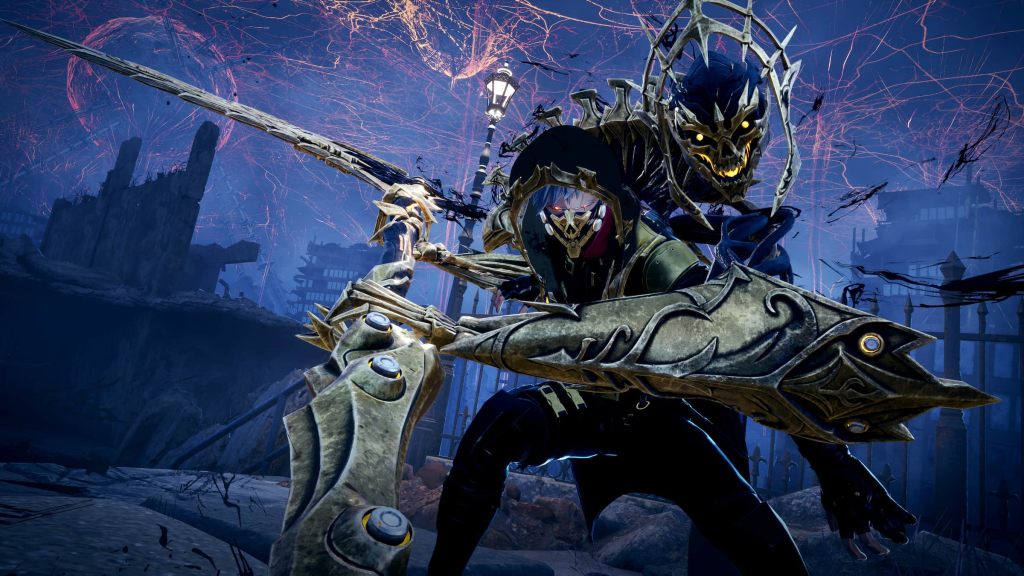It’s been years since Code Vein first tried to carve out its identity in the Souls-like space. With its anime-inspired aesthetic and flashy combat, the game was an instant curiosity, but that curiosity didn’t translate into lasting critical acclaim. Many players found themselves torn between its striking art direction and its rough edges, a mix that left Code Vein standing awkwardly in the shadow of the genre it clearly admired. Still, it had something special beneath the surface: potential that deserves a second chance.
Videos by ComicBook.com
Enter Code Vein 2. It has an opportunity to truly refine what made the first game stand out while correcting the design choices that held it back. The foundation is already there: stylish combat, a rich post-apocalyptic setting, and a cast of memorable characters. What the sequel needs is refinement and freedom. These three changes could help Code Vein 2 win over both critics and fans this time around.
3. More Open Class Customization

The original Code Vein’s Blood Code system was ambitious, but it never quite delivered the sense of player freedom that defines the Souls-like genre. Each Blood Code essentially functioned as a pre-set class with its own stat distribution and limited abilities. While switching between them on the fly sounded great in theory, it left little room for player experimentation. There were no traditional attributes to level, no way to min-max specific builds, and no true sense of ownership over your character’s progression. What should have been a flexible system instead felt restrictive and shallow over time.
For Code Vein 2, Bandai Namco needs to rethink how players grow stronger. Instead of locking progress behind static archetypes, the sequel should give players control over their stats and scaling. Let them invest in strength, dexterity, vitality, or willpower, anything that makes progression feel personal. A hybrid approach could work best, keeping the unique flair of Blood Codes but layering in traditional RPG depth. That kind of system would reward experimentation and give players the same sense of control that makes Souls-likes so replayable.
If Code Vein 2 can strike that balance between identity and flexibility, it would immediately set itself apart from its predecessor. The Blood Code concept doesn’t need to disappear at all. It was a strong idea that separated itself from other Souls-like titles. It just needs to experience a proper evolution into something more dynamic. Critics praised the first game’s potential but criticized its lack of depth. With a freer, stat-based progression system, the sequel could finally deliver the build variety that Souls fans crave.
2. More Ambitious Level Design

If there’s one flaw that consistently held Code Vein back, it was the level design. While the world’s art direction was undeniably beautiful, most areas felt too similar, with repetitive corridors and confusing layouts that turned exploration into a chore. There were a few notable landmarks, and while interconnected routes certainly existed, they weren’t exactly memorable. Instead, Code Vein’s zones often felt like disconnected arenas strung together with fog gates.
For the sequel, Bandai Namco should take a page from FromSoftware’s book and focus on crafting environments that feel deliberate. Each area should tell a story through its design, with clear visual landmarks and shortcuts that make exploration rewarding. Even within a linear structure, variety is the spice of life. Imagine collapsing cities reclaimed by vegetation, frozen wastelands where visibility becomes a mechanic, or flooded ruins that shift dynamically with player progress. The first game had atmosphere, but it lacked identity from zone to zone. They were not terrible by any means, but Code Vein 2 can make the design much stronger, especially now that the series has established itself as a proper Souls-like in the eyes of the community.
More ambitious level design would also make Code Vein 2’s combat shine brighter, too. The first game often relied on small arenas or narrow hallways that limited how players could approach encounters. A sequel that introduces multi-level arenas, vertical traversal, and environmental hazards would add the complexity that critics and players alike found missing. If the world itself becomes a weapon or a puzzle, exploration won’t just be a path between fights: it’ll be part of the experience. This results in said areas being remembered later. Think about why locations like Anor Londo in Dark Souls or Leyndell, the Royal Capital, in Elden Ring remain so deeply admired by Souls-like fans, even years after their release.
1. Proper Mod Support

Few things can extend a game’s life longer than full mod support from the developers, especially for a title with as much visual and mechanical flair as Code Vein. The original game already developed a small but dedicated modding community that created new outfits, camera tweaks, and performance fixes despite having no official tools. That enthusiasm shows how much potential the sequel could unlock if Bandai Namco leaned into it. Mod support is a blatant statement to a game’s playerbase that the developers trust their community to help shape the game’s future.
Official mod support could include Steam Workshop integration, accessible asset editing tools, or even official community challenges. The Souls-like audience has a proven appetite for tinkering, rebalancing, and reskinning their favorite games, largely due to those things being a requirement to get through games in the genre. This can work in Code Vein 2’s favor. Imagine community-made Blood Codes, new weapon types, or even total conversions that expand Code Vein’s universe. With a proper framework, the modding scene could turn Code Vein 2 into a living platform rather than a one-and-done release. And just to be clear, there isn’t really another Souls title out that has done this yet. Code Vein 2 could be the pioneer to something that could massively boost review scores and long-term sales, but the people behind the game need to have the vision to notice this gold mine.
Beyond longevity, mod support would also help address one of the biggest issues from the first game: inconsistent polish. One of the biggest reasons why games from Bethesda are so praised, even if they are often a buggy, complete mess on release. A passionate playerbase is willing to fix the problems with your game, for free. It’s the type of free labor that is non-hostile, and it usually results in a better product for the developer. Players often relied on fan fixes to stabilize performance or rebalance difficulty. By supporting modders from the start, Bandai Namco could turn what was once a weakness into a strength. It’s a formula proven competent since the early 90s: give the community creative freedom, and they’ll give your game years of life and a steady flow of goodwill. So why not pull this lever?
What do you think? Leave a comment below and join the conversation now in the ComicBook Forum!









